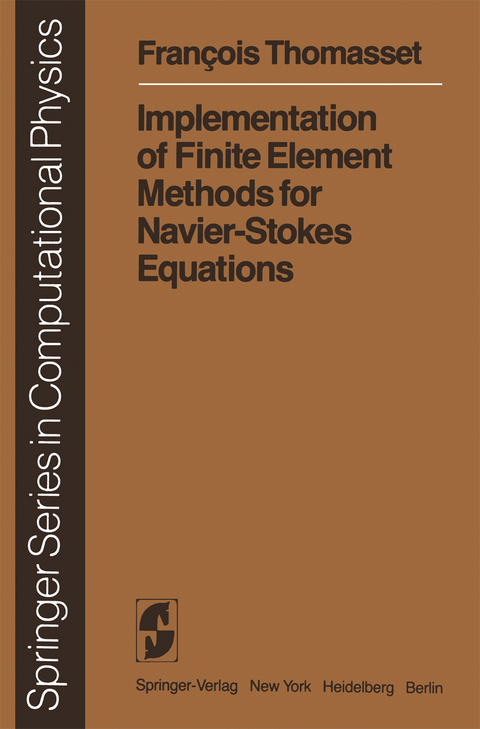
Implementation of Finite Element Methods for Navier-Stokes Equations
Springer Berlin (Verlag)
978-3-642-87049-1 (ISBN)
Notations.- 1. Elliptic Equations of Order 2: Some Standard Finite Element Methods.- 1.1. A 1-Dimensional Model Problem: The Basic Notions.- 1.2. A 2-Dimensional Problem.- 1.3. The Finite Element Equations.- 1.4. Standard Examples of Finite Element Methods.- 1.5. Mixed Formulation and Mixed Finite Element Methods for Elliptic Equations.- 2. Upwind Finite Element Schemes.- 2.1. Upwind Finite Differences.- 2.2. Modified Weighted Residual (MWR).- 2.3. Reduced Integration of the Advection Term.- 2.4. Computation of Directional Derivatives at the Nodes.- 2.5. Discontinuous Finite Elements and Mixed Interpolation.- 2.6. The Method of Characteristics in Finite Elements.- 2.7. Peturbation of the Advective Term: Bredif (1980).- 2.8. Some Numerical Tests and Further Comments.- 3. Numerical Solution of Stokes Equations.- 3.1. Introduction.- 3.2. Velocity-Pressure Formulations: Discontinuous Approximations of the Pressure.- 3.3. Velocity-Pressure Formulations: Continuous Approximation of the Pressure and Velocity.- 3.4. Vorticity-Pressure-Velocity Formulations: Discontinuous Approximations of Pressure and Velocity.- 3.5. Vorticity Stream-Function Formulation: Decompositions of the Biharmonic Problem.- 4. Navier-Stokes Equations: Accuracy Assessments and Numerical Results.- 4.1. Remarks on the Formulation.- 4.2. A review of the Different Methods.- 4.3. Some Numerical Tests.- 5. Computational Problems and Bookkeeping.- 5.1. Mesh Generation.- 5.2. Solution of the Nonlinear Problems.- 5.3. Iterative and Direct Solvers of Linear Equations.- Appendix 2. Numerical Illustration.- Three Dimensional Case.- References.
| Erscheint lt. Verlag | 12.12.2012 |
|---|---|
| Reihe/Serie | Scientific Computation |
| Zusatzinfo | VIII, 164 p. 9 illus. |
| Verlagsort | Berlin |
| Sprache | englisch |
| Maße | 155 x 235 mm |
| Gewicht | 272 g |
| Themenwelt | Naturwissenschaften ► Physik / Astronomie ► Mechanik |
| Naturwissenschaften ► Physik / Astronomie ► Strömungsmechanik | |
| Schlagworte | Complexity • Finite-Element-Methode • fluid- and aerodynamics • fluid mechanics • Mechanics • Navier-Stokes Equation • navier-stokes equations • Navier-Stokessche Gleichung • Solution • Stokessche Gleichung |
| ISBN-10 | 3-642-87049-X / 364287049X |
| ISBN-13 | 978-3-642-87049-1 / 9783642870491 |
| Zustand | Neuware |
| Haben Sie eine Frage zum Produkt? |
aus dem Bereich


